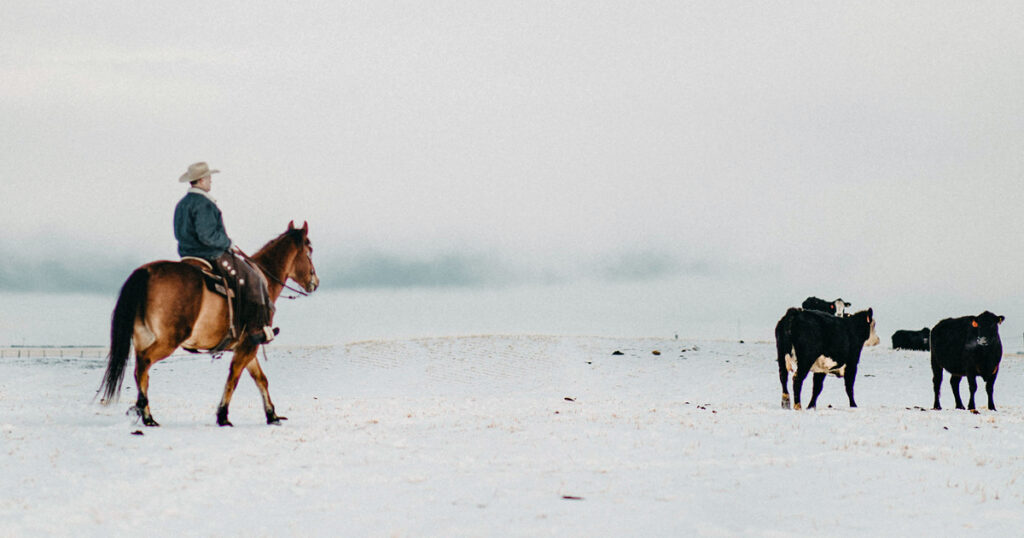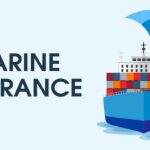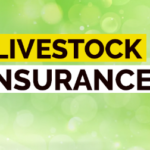Livestock coverage is vital chance management tool for farmers ranchers & agricultural producers concerned in animal husbandry. It offers monetary protection towards losses in farm animals because of various factors which include disease accidents natural failures & in some cases marketplace fluctuations. number one motive of farm animals coverage is to stabilize farm income and promote meals protection by using mitigating monetary risks related to cattle manufacturing.
In essence cattle coverage works similarly to other styles of coverage: cattle proprietors pay premiums to coverage carriers in alternate for coverage towards potential losses. If protected event takes place and results in death damage or loss of livestock insurance business enterprise compensates owner primarily based on phrases in their coverage.
The significance of livestock insurance can not be overstated in trendy agricultural landscape. With increasing weather variability disease outbreaks & market volatility farm animals manufacturers face tremendous dangers. Livestock insurance serves as protection net permitting farmers to hold their operations even inside face of enormous losses thereby making sure stableness of farm animals sector and meals supply.

History and Evolution of Livestock Insurance
The concept of farm animals coverage has roots.. that stretch lower back centuries evolving alongside agricultural practices and economic systems. Heres quick assessment of its historic development:
Early Developments
- Ancient instances: Informal chance sharing agreements among farmers and herders.
- Middle Ages: Guilds and mutual aid societies furnished few protection for livestock owners.
- 17th 18th centuries: Early styles of marine insurance now and again covered farm animals transported with aid of sea.
Modern Era
- Late 19th century: Private insurance corporations started out presenting specific cattle rules.
- Early 20th century: Government involvement in livestock coverage packages started out in some countries.
- Post World War II: Expansion of cattle coverage packages in particular in advanced international locations.
Recent Innovations
- Eighties Nineteen Nineties: Introduction of extra comprehensive coverage options.
- 2000s: Development of index based totally farm animals coverage specially useful in developing countries.
- 2010s gift: Integration of generation for danger evaluation and claims processing.
The evolution of farm animals coverage displays converting nature of agricultural dangers and developing sophistication of hazard control strategies. From simple mutual resource agreements to complex records driven coverage products industry has constantly tailored to fulfill wishes of cattle manufacturers in an more and more unsure global.
Types of Livestock Insurance
Livestock insurance comes in numerous bureaucracy every designed to cope with specific dangers and meet diverse needs of farm animals manufacturers. predominant styles of livestock coverage encompass:
All Risk Mortality Insurance
This is maximum complete kind of livestock coverage masking loss of life from huge variety of reasons inclusive of:
- Disease
- Accidents
- Natural failures (e.G. floods lightning moves)
- Fire
- Theft
All hazard guidelines typically cowl person animals or entire herds with rates based on factors along with animal type value & health popularity.
Named Peril Insurance
This sort of insurance covers farm animals losses due to precise named perils. Common perils consist of:
- Fire
- Lightning
- Windstorm
- Hail
- Flood
- Earthquake
- Accidental taking pictures
Named peril guidelines are regularly much less highly priced than all danger policies but provide greater constrained coverage.
Livestock Revenue Protection (LRP)
LRP is charge threat control tool.. that offers safety against declines in marketplace charges. It would not cowl mortality or other bodily losses. LRP rules assure minimum price for cattle & if market fees fall beneath this guaranteed stage policy will pay out distinction.

Livestock Gross Margin (LGM) Insurance
LGM policies guard in opposition to lack of gross margin (market value of farm animals minus feed fees). This form of coverage facilitates producers control each output and enter price dangers.
Herd Insurance
Instead of insuring character animals herd insurance covers percent of entire value of herd. This may be more price effective for massive scale producers.
Transit Insurance
This covers livestock throughout transportation defensive in opposition to death or damage which could occur at some stage in loading unloading or at same time as in transit.
Breeding Stock Insurance
Specialized coverage for valuable breeding animals frequently together with coverage for infertility or loss of use.
Poultry Insurance
Specific rules for chicken producers covering risks which includes disease outbreaks intense climate & system failure (e.G. air flow device breakdowns).
Aquaculture Insurance
Tailored rules for fish farms and other aquaculture operations masking dangers inclusive of pollutants disorder & extreme climate occasions.
Index Based Livestock Insurance
This revolutionary type of coverage makes use of indexes consisting of rainfall levels or satellite imagery of flora to decide payouts. Its especially beneficial in regions wherein traditional coverage is impractical because of lack of infrastructure or excessive administrative fees.
Livestock Business Interruption Insurance
This covers misplaced profits and ongoing costs if protected event (like ailment outbreak) forces brief halt to operations.
The availability and specifics of these insurance types can range considerably by means of united states and location. Livestock manufacturers often combine distinct varieties of insurance to create comprehensive risk management method tailored to their precise desires and circumstances.

How Livestock Insurance Works
Understanding mechanics of livestock insurance is important for both producers and policymakers. Heres breakdown of way cattle insurance typically operates:
Policy Selection and Enrollment
- Livestock owners select an coverage policy.. that fits their desires.
- They choose coverage levels which can be based on market fee of animals or predetermined amount.
- Premiums are calculated based on factors like animal type age health cost & farms loss records.
Premium Payment
- Producers pay rates which can be sponsored by authorities in some nations.
- Payment schedules can range but are regularly annual or semi annual.
Coverage Period
- The coverage duration is usually 365 days but can vary depending at coverage kind.
- Some rules like ones for transported animals may also cowl shorter intervals.
Risk Management
- Throughout coverage period producers are expected to observe accurate animal husbandry practices.
- They need to hold correct statistics in their farm animals stock fitness treatments & any losses.
Loss Assessment
- If loss takes place manufacturer notifies their coverage company directly.
- For mortality claims proof of demise (e.G. veterinary certificate snap shots) is commonly required.
- For few forms of insurance like index primarily based regulations payouts are determined robotically primarily based on triggering event (e.G. drought conditions).
Claim Processing
- An adjuster may visit farm to evaluate loss and verify claim.
- The coverage corporation opinions declare and supporting documentation.
Indemnity Payment
- If claim is permitted insurance business enterprise calculates indemnity based at coverage terms.
- For mortality policies this is commonly insured value of animal(s).
- For revenue or margin safety regulations it is difference between guaranteed and actual quantities.
Claim Settlement
- The insurance corporation issues fee to manufacturer.
- Producers can use this charge to update misplaced animals or cover different costs.
Policy Renewal and Adjustment
- At end of coverage length manufacturers can renew their policy.
- Premiums and coverage may be adjusted based totally on past years enjoy and cutting edge marketplace situations.
Special Considerations
- Waiting Periods: Many guidelines have waiting duration after buy before insurance starts offevolved to prevent insurance fraud.
- Pre current Conditions: Generally animals with pre current fitness troubles can be excluded from insurance or have limited insurance.
- Reporting Requirements: Producers regularly need to document large adjustments in their herd (e.G. new purchases income) to maintain accurate coverage.

Technology in Livestock Insurance
Modern livestock coverage increasingly is predicated on technology:
- Electronic ID tags for accurate animal identity and tracking
- Satellite imagery for assessing pasture conditions in index based coverage
- Blockchain for obvious and efficient declare processing
- Data analytics for improved hazard assessment and pricing
Understanding these mechanics enables farm animals producers make informed choices about their coverage desires and allows policymakers layout effective livestock coverage packages.. that balance safety for producers with economic sustainability for insurers and governments.
Importance of Livestock Insurance in Agriculture
Livestock insurance performs vital role in present day agriculture presenting blessings.. that extend past person manufacturers to whole agricultural region and meals machine. Heres an exploration of its importance:
Risk Management for Producers
- Financial Stability: Livestock insurance provides protection net helping manufacturers recover from losses and hold their operations.
- Encourages Investment: With reduced threat manufacturers are more likely to spend money on their farms doubtlessly increasing productiveness and adopting new technology.
- Credit Access: Insured manufacturers frequently have less complicated get admission to to credit as creditors view them as less unstable borrowers.
Food Security
- Stable Production: By shielding producers towards catastrophic losses livestock insurance helps preserve strong food deliver.
- Encourages Diversification: Some coverage programs incentivize diversification in cattle operations which could beautify typical meals security.
Economic Stability in Rural Areas
- Income Stabilization: By smoothing producers earning livestock insurance allows stabilize rural economies.. that depend closely on agriculture.
- Job Preservation: It facilitates hold farms operational retaining agricultural jobs and supporting associated industries.
Animal Welfare
- Better Care: Insurance regularly requires adherence to excellent animal husbandry practices selling better take care of livestock.
- Disease Management: Insurance can incentivize early reporting and control of sicknesses benefiting animal welfare and public health.
Market Efficiency
- Price Stability: By decreasing supply shocks from big scale cattle losses coverage can assist stabilize meat and dairy costs.
- Efficient Resource Allocation: Producers can make breeding and herd management selections primarily based on market signals as opposed to just risk aversion.
Government Policy Tool
- Disaster Relief: Livestock insurance reduces want for ad hoc catastrophe bills offering more structured and predictable form of help.
- Policy Implementation: Insurance may be used to incentivize positive practices or production techniques aligning with broader agricultural or environmental regulations.
International Trade
- Competitiveness: Livestock coverage can help domestic producers compete with ones from international locations where livestock manufacturing is heavily subsidized.
- Trade Agreements: Some worldwide trade agreements classify certain kinds of livestock insurance as permissible sorts of agricultural help.
Innovation and Progress in Livestock Production
- Risk Taking: With monetary protection net manufacturers can be extra willing to attempt new breeds technology or management strategies.
- Data Collection: farm animals coverage system generates valuable information on manufacturing health & dangers which can tell research and policy.
Social and Psychological Benefits
- Stress Reduction: Knowing theyve coverage coverage can considerably lessen manufacturers pressure levels enhancing mental fitness in rural groups.
- Generational Continuity: By making cattle manufacturing much less financially volatile insurance can encourage more youthful generations to keep circle of relatives farming traditions.
Resilience to Extreme Events
- Climate Change: As severe climate events become greater common due to climate exchange livestock insurance turns into increasingly more critical for agricultural resilience.
- Disease Outbreaks: Insurance affords critical help at some stage in extensive sickness outbreaks assisting industry recover.
Environmental Considerations
- Sustainable Practices: Some insurance programs encourage or require sustainable livestock management practices promoting long time period environmental fitness.
- Climate Change Adaptation: Livestock coverage can facilitate producers model to changing climate conditions via decreasing economic dangers of attempting new control techniques.
The importance of cattle insurance in agriculture is multifaceted referring to monetary social environmental & policy components. As agriculture faces growing challenges from weather alternate populace increase & market volatility position of cattle insurance in ensuring solid effective & resilient cattle quarter is probable to end up even more critical.

Government Role in Livestock Insurance
Governments global play sizable role in livestock insurance programs recognizing their significance for agricultural stability and meals safety. quantity and nature of government involvement range by means of us of but normally consist of following factors:
Subsidy Programs
- Premium Subsidies: Many governments subsidize portion of manufacturers insurance rates to make coverage extra low cost and boom participation.
- Administrative Cost Support: Governments often cover part of executive and running costs of insurance companies.
Regulatory Framework
- Legal Structure: Governments set up prison and regulatory framework for livestock insurance defining coverage requirements eligibility criteria & operational suggestions.
- Consumer Protection: Regulations ensure fair remedy of manufacturers and save you predatory practices via coverage companies.
Reinsurance
- Government as Reinsurer: In few countries authorities acts as reinsurer taking up part of risk from non public insurance organizations.
- Catastrophic Coverage: Governments often provide coverage for catastrophic losses.. that exceed ability of personal insurers.
Research and Development
- Data Collection: Government corporations accumulate and keep large agricultural facts crucial for actuarial calculations and chance evaluation.
- Innovation Support: Many governments fund research into new insurance products chance assessment techniques & cattle control technology.
Education and Outreach
- Producer Education: Government businesses often behavior educational packages to help livestock producers apprehend and efficiently use insurance.
- Technical Assistance: Providing technical aid to each manufacturers and coverage carriers to enhance program effectiveness.
International Cooperation
- Knowledge Sharing: Governments take part in worldwide boards to percentage first rate practices in farm animals coverage.
- Development Assistance: Developed countries regularly assist established order of livestock coverage applications in growing nations as part of agricultural useful resource.
Policy Integration
- Farm Bill Integration: In nations just like U.S. farm animals insurance is mostly key factor of broader agricultural coverage regulation.
- Environmental Policy: Governments may also use farm animals coverage to incentivize environmentally pleasant farming practices.
Market Stabilization
- Price Support: Some government livestock coverage packages consist of price safety additives supporting to stabilize agricultural markets.
- Supply Management: Insurance programs can be designed to persuade livestock manufacturing choices circuitously affecting supply.
Disaster Response
- Complementing Disaster Aid: Livestock coverage often works in conjunction with different catastrophe alleviation programs providing more comprehensive protection internet for manufacturers.
- Rapid Response: Insurance can provide faster economic help than traditional catastrophe resource applications.
Disease Control and Prevention
- Biosecurity Incentives: Governments may additionally use insurance packages to encourage higher biosecurity practices among livestock manufacturers.
- Outbreak Response: Insurance may be tool in managing financial impact of government mandated culling in course of disease outbreaks.
Challenges and Criticisms
While authorities involvement in cattle coverage is normally visible as useful it is not without demanding situations and criticisms:
- Moral Hazard: Some argue.. that closely backed insurance may encourage volatile management practices.
- Cost to Taxpayers: excessive value of subsidies is common point of debate in many nations.
- Market Distortion: Critics argue.. that authorities supported insurance may additionally distort agricultural markets and trade.
- Equity Concerns: There are often debates about whether or not authorities aid disproportionately benefits large operations.
The governments function in cattle insurance displays stability between supporting agricultural balance and handling public assets effectively. As agricultural demanding situations evolve especially with weather exchange and rising diseases nature of government involvement in cattle coverage is possibly to retain adapting to satisfy new wishes and cope with emerging risks.






